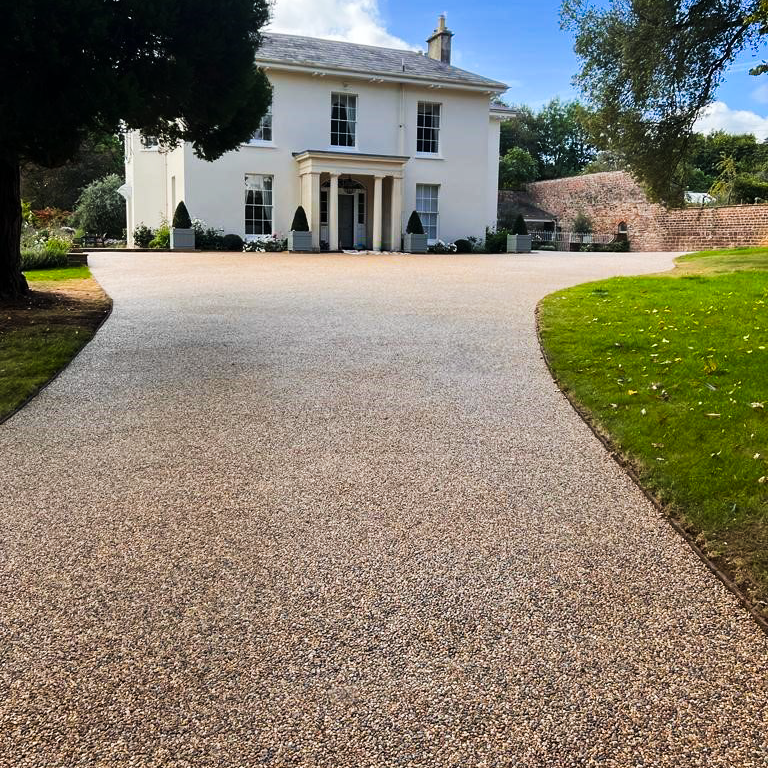Understanding Permeability in Resin Surfaces
Amidst growing concerns over environmental issues and urbanisation, the concept of sustainable urban drainage systems (SuDS) has never been more pertinent. At the heart of SuDS is the principle of managing rainfall through natural processes, promoting groundwater recharge, and mitigating the risk of urban flooding. One critical question that arises in this domain is, “Is resin permeable?” and if so, “How does it align with the objectives of SuDS?” Here, we delve into these aspects, clarifying the role of resin surfaces in promoting environmentally sustainable practices.
Resin Surfaces: A Spotlight on Permeability
Resin-bound surfacing is a system that meticulously combines aggregates with a clear resin binder, meticulously formulated to allow water to freely drain through the finished surface. The resultant permeable surface is a fundamental attribute contributing to its growing popularity, especially in urban areas where non-permeable surfaces have contributed to taxing the existing drainage systems.
Aligning with SuDS: The Environmental Impact
SuDS aim to combat the challenges posed by surface water runoff in urban areas. The inclusion of permeable surfaces, like resin-bound systems, within SuDS designs, is pivotal. By allowing water to seep through, resin complements SuDS objectives, essentially aiding in water management, reducing run-off volumes, and improving water quality.
This natural water management system replicates the way water drains in nature, a methodology that is at the core of SuDS. It ensures that during periods of heavy rainfall, water can soak through the resin surface and into the ground, thereby reducing the burden on local drainage systems and minimising the risk of flooding.
Permeability in Practice: Resin’s Functional Role
The functionality of resin in water management is twofold. Firstly, it reduces surface water runoff, diminishing the risk of localised flooding. Secondly, it acts as a natural filtration system; as water permeates through the resin-bound surface, any pollutants and heavy metals are naturally filtered out, contributing to cleaner groundwater replenishment.
Conclusion: Resin, a Keystone in Sustainable Urban Planning
In conclusion, when we ask if resin is permeable, the answer is a resounding yes. Its role extends beyond simple aesthetics and surface covering. Resin-bound surfacing is a key player in the broader landscape of sustainable urban development, particularly in its alignment with SuDS principles. By opting for resin-bound surfacing, stakeholders are not just investing in a solution that enhances the appeal of their spaces but also actively participating in a larger, critical environmental initiative. This balance between functionality and environmental responsibility positions resin-bound surfacing as a forward-thinking choice for modern urban landscapes.


